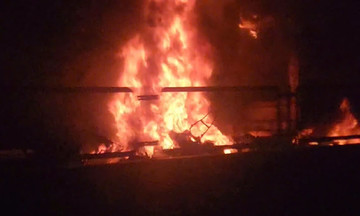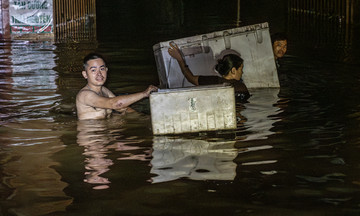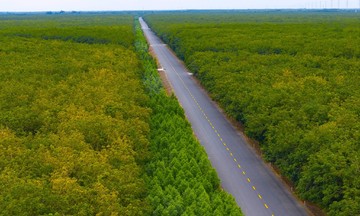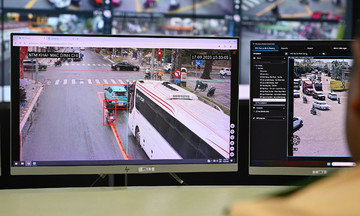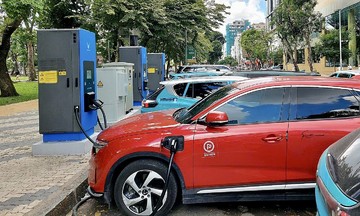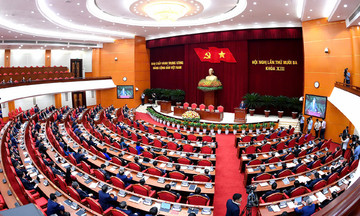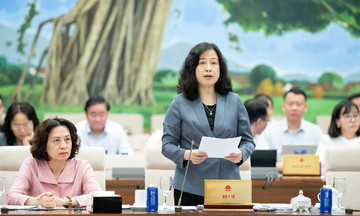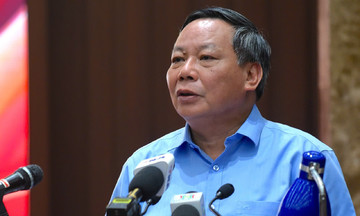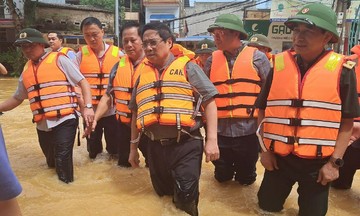The project comprises five sets of statues symbolizing the support of the Soviet Union, China, Cuba, Laos, and Cambodia. Each set includes three to five full-body bronze statues, approximately 3 meters tall, placed on 4x4 meter square platforms, almost 1 meter high. Vietnamese artisans and sculptors created the works based on research into each country's assistance, consulting with the respective governments and an art council.
After 45 days of construction, the platforms, landscaping, and the Soviet and Cuban statue sets are complete. The remaining three sets representing China, Laos, and Cambodia are underway and expected to be finished before 22/12. The Ministry of National Defense held a cornerstone-laying ceremony for the Chinese specialist and Laotian and Cambodian international soldier statue sets.
 |
Statues representing the solidarity and friendship between Vietnam and the Soviet Union. Photo: Hoang Phong |
Statues representing the solidarity and friendship between Vietnam and the Soviet Union. Photo: Hoang Phong
Lieutenant General Hoang Xuan Chien, Deputy Minister of National Defense, emphasized that during the war, Vietnam received significant support from international friends, especially China, the Soviet Union, Cuba, Laos, and Cambodia. "They are comrades and friends who spared no effort, resources, and even their lives for Vietnam's independence and peace," he said.
He added that this support was not only material but also an invaluable source of moral encouragement, contributing to the victory of the Vietnamese revolution. The statue project symbolizes solidarity, friendship, and international gratitude. It also serves as an educational site for current and future generations about the power of unity and international friendship.
Russian Ambassador to Vietnam Gennady Stepanovich Bezdetko noted that the Soviet Union was among the first countries to recognize the Democratic Republic of Vietnam (1/1950). It provided large-scale aid, including modern weapons ranging from anti-aircraft guns, armored vehicles, and air force and infantry weapons to other equipment. It also directly trained Vietnamese military personnel. Thanks to intensive training, Vietnamese troops quickly mastered advanced weaponry and effectively applied it in combat.
He thanked Vietnam for preserving the memory of this historical period and the people who stood side by side, considering it a testament to the sincere friendship and trust between Russia – the successor state to the Soviet Union – and Vietnam.
 |
Statues representing the solidarity and friendship between Vietnam and Cuba. Photo: Hoang Phong |
Statues representing the solidarity and friendship between Vietnam and Cuba. Photo: Hoang Phong
Cuban Ambassador to Vietnam Rogelio Polanco Fuentes affirmed that the inauguration of the statues honors Cuban soldiers who fought alongside Vietnam during the war. They shared their experience and directly participated in units of the Vietnam People's Army, enriching the art of "people's war." Many Cuban soldiers heroically sacrificed their lives, leaving a legacy that contributes to the Vietnam-Cuba defense relationship today.
"This is also a tribute to Cuban revolutionary leader Fidel Castro Ruz, who made the immortal statement, cementing the deep brotherhood between the two nations: 'For Vietnam, Cuba is willing to shed its own blood'," Fuentes said.
Son Ha



